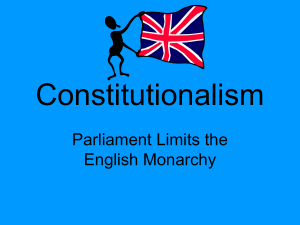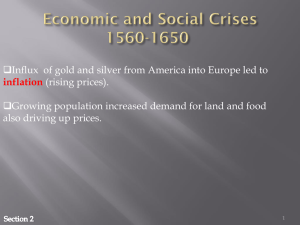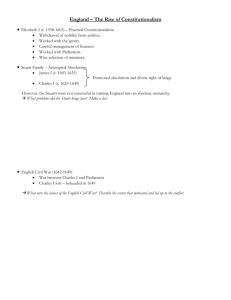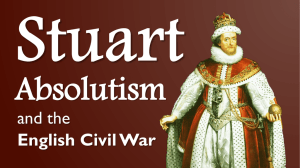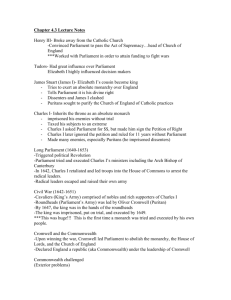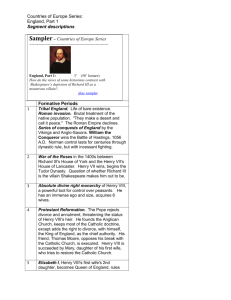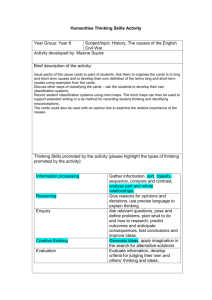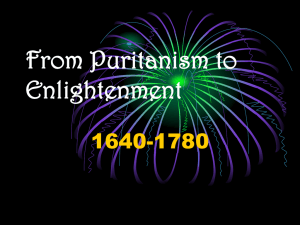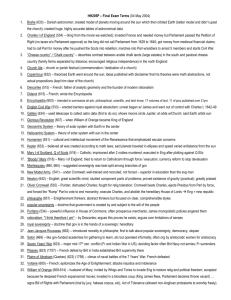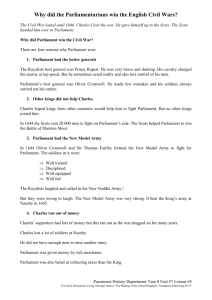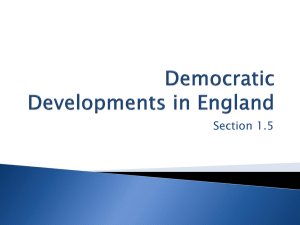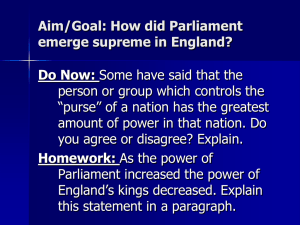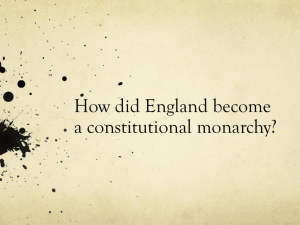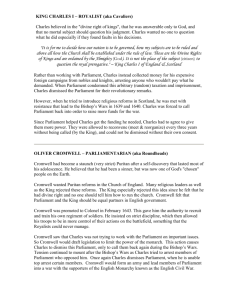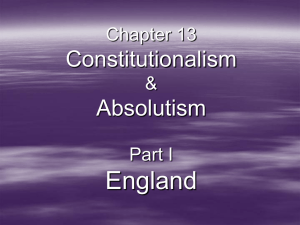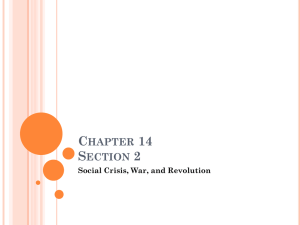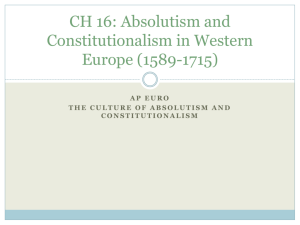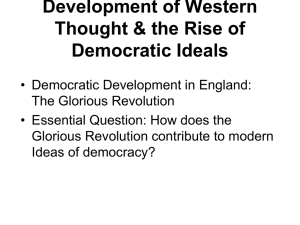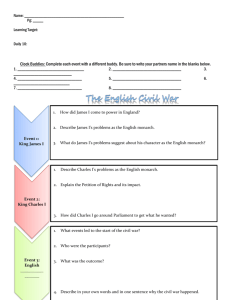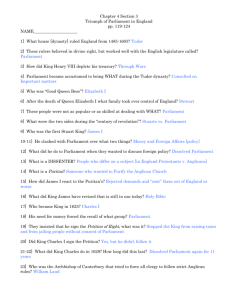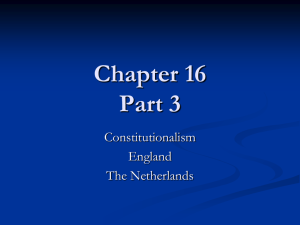Constitutionalism
advertisement
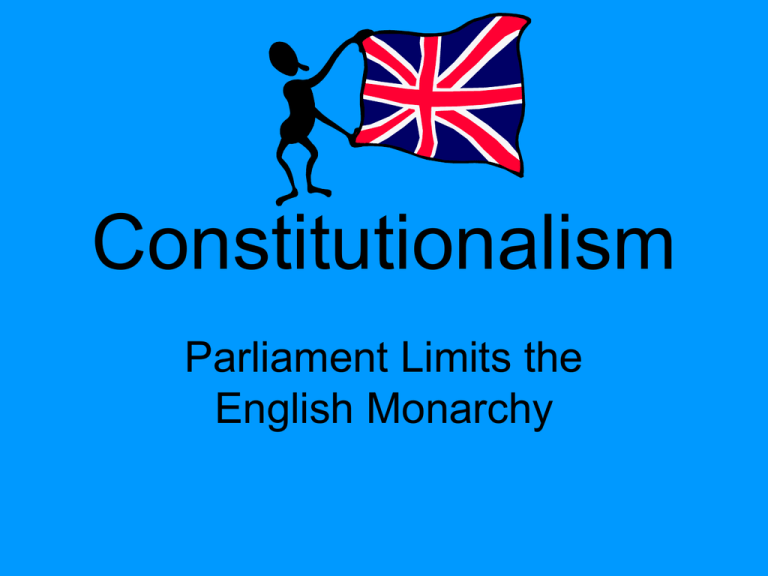
Constitutionalism Parliament Limits the English Monarchy London, England Some Vocab • Constitutionalism: Laws limit the rulers power • Parliament: The legislative body of government in England and other parts of the world. They check the power of the monarch and make laws. Similar to Congress in the USA. Monarchs Clash with Parliament * James I—King of England 1603-1625 (Remember Elizabeth died w/o an heir. He was already James VI of Scotland and her cousin.) -believed in divine right of kings -struggled with Parliament over money -he was a Calvinist, yet refused to make Puritan reforms like getting rid of bishops -He seemed to favor the Catholics because he didn’t cater to the Puritans (who were extreme Protestants). Charles I -Began taxing w/o Par. consent -When Par. objected, he dissolved (dismissed) Parliament -Petition of Right 1628 (he ignores it in the end) -Charles agreed to: 1) not imprison subjects w/o due cause 2) not levy high taxes w/o Par. consent 3) not house soldiers in private homes -quartering 4) not impose martial law in peacetime -yet it was important, indicating the law was higher than the king - “Long Parliament” forces king to sign Triennial Act (Par. Must be called every 3 years) English Civil War (1642-1649) -Charles I wanted both his kingdoms (England and Scotland which he inherited through his grandmother, Mary Queen of Scots) to follow one religion. -the Scots rebelled (Presbyterian) -Charles I needed $ to fight the Scots -called on Parliament -Par. used this opportunity to pass laws limiting royal power and wouldn’t give him an army -angered Charles I -raised his own army Execution of the King • More Religious Issues – Charles had married a French Catholic – Seemed too sympathetic to the Cath. Church • Tried to bring back more ritual to the Anglican Church of England • Angered the Puritans • Execution (regicide), 1649 – The Puritans demanded that Charles be tried for treason after the Civil War Parliament: London, England Oliver Cromwell (r.1653-1658) *English Civil War:1642-1649 -Royalists/Cavaliers = supported Charles I -Roundheads = Puritan supporters of Par. *Oliver Cromwell -Led the Roundheads -Defeated Cavaliers -Put Charles on trial for treason, beheaded 1649 -Created a republican form of govt. -Promoted religious tolerance -Ruled until 1658 as a dictator Cromwell Statue in Front of Westminster Abbey Restoration and Revolution -Charles II succeeded Cromwell (elected by Par.) 1660 -restored the monarchy -habeas corpus 1679 -gave every prisoner the right to trial -James II and the Glorious Revolution -1685 James II came to power -Catholic bro of Charles II -Parliament members helped overthrow James II -put Mary (daughter of James) and William of Orange on the throne -bloodless revolution 1688 William and Mary Political Changes -Constitutional Monarchy -Laws limit the ruler’s power -English Bill of Rights 1689 -Listed what a ruler could not do -Cabinet system develops -Group of gov’t ministers representing Par. -Model for U.S. gov’t Quickwrite • In what ways did the English monarchs of the 17th and 18th century challenge the concept of Constitutionalism? (In other words, what did they do to oppose the English Parliament?)
